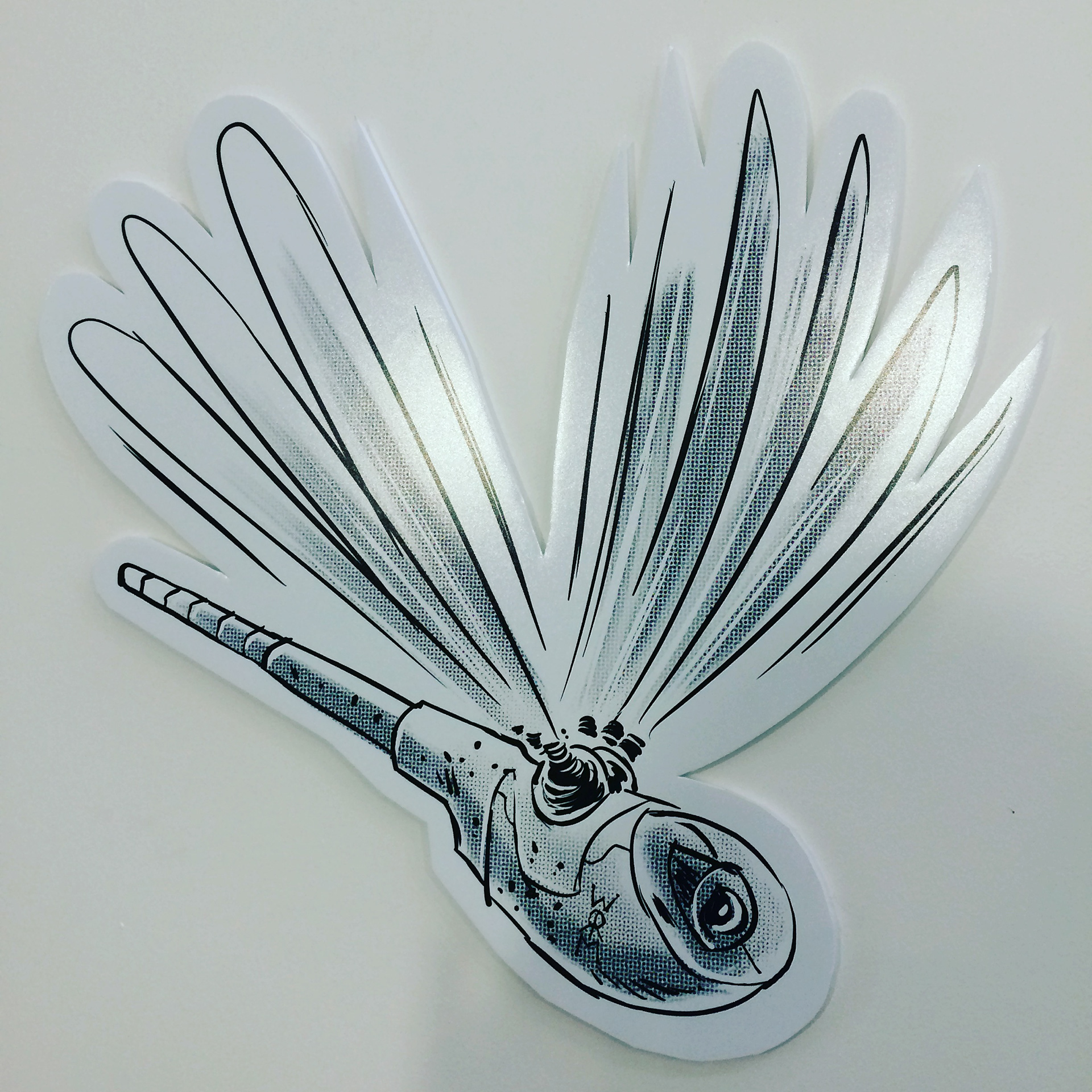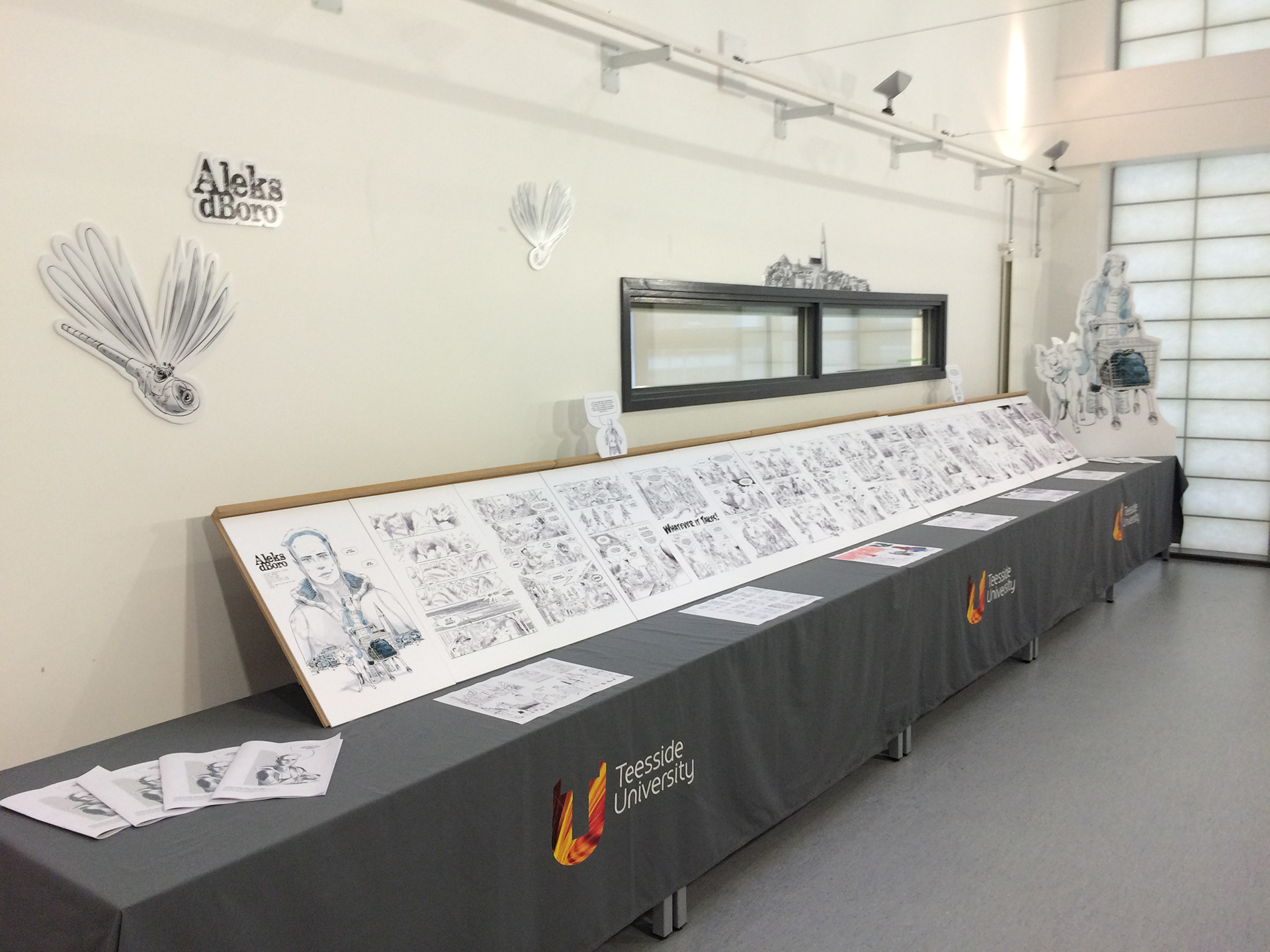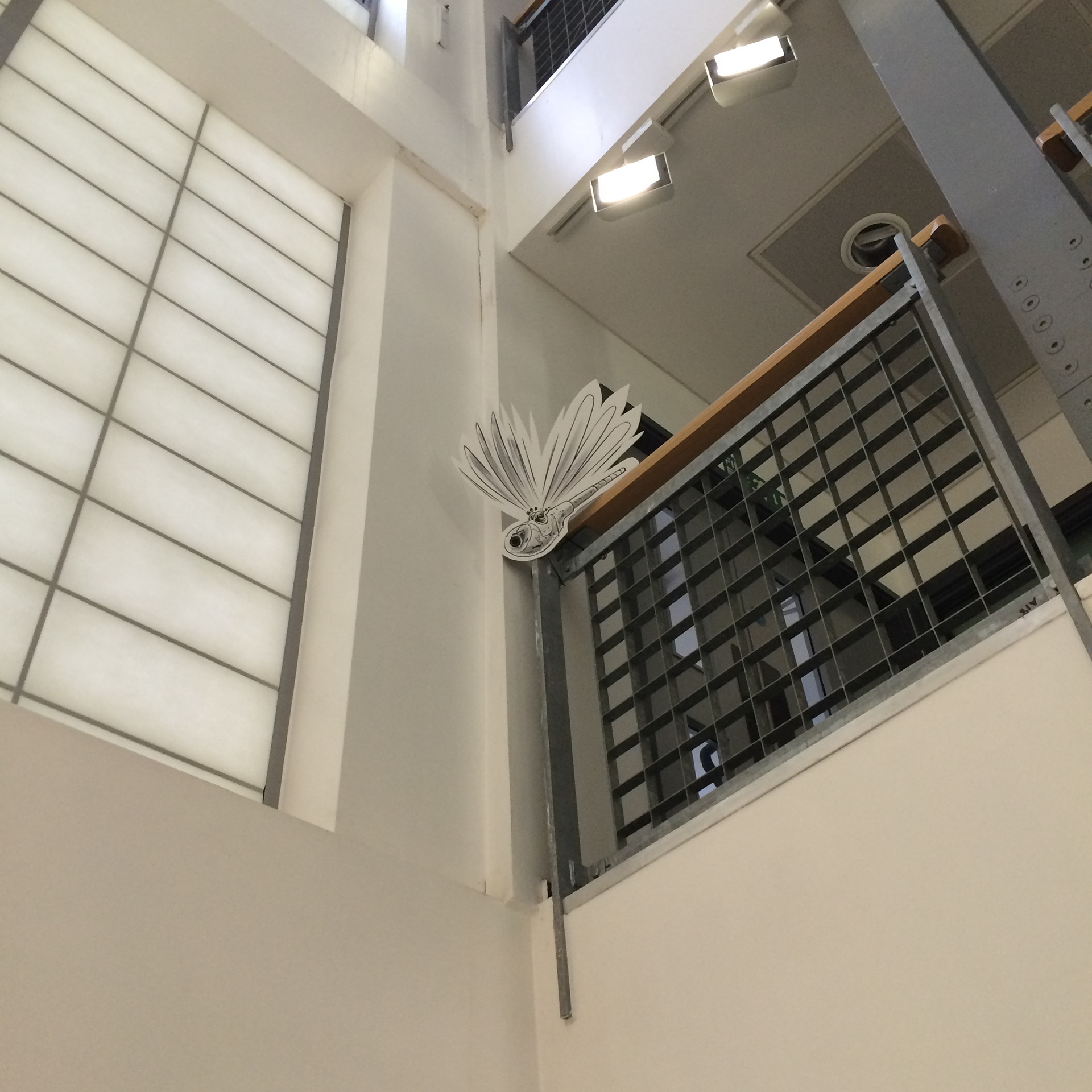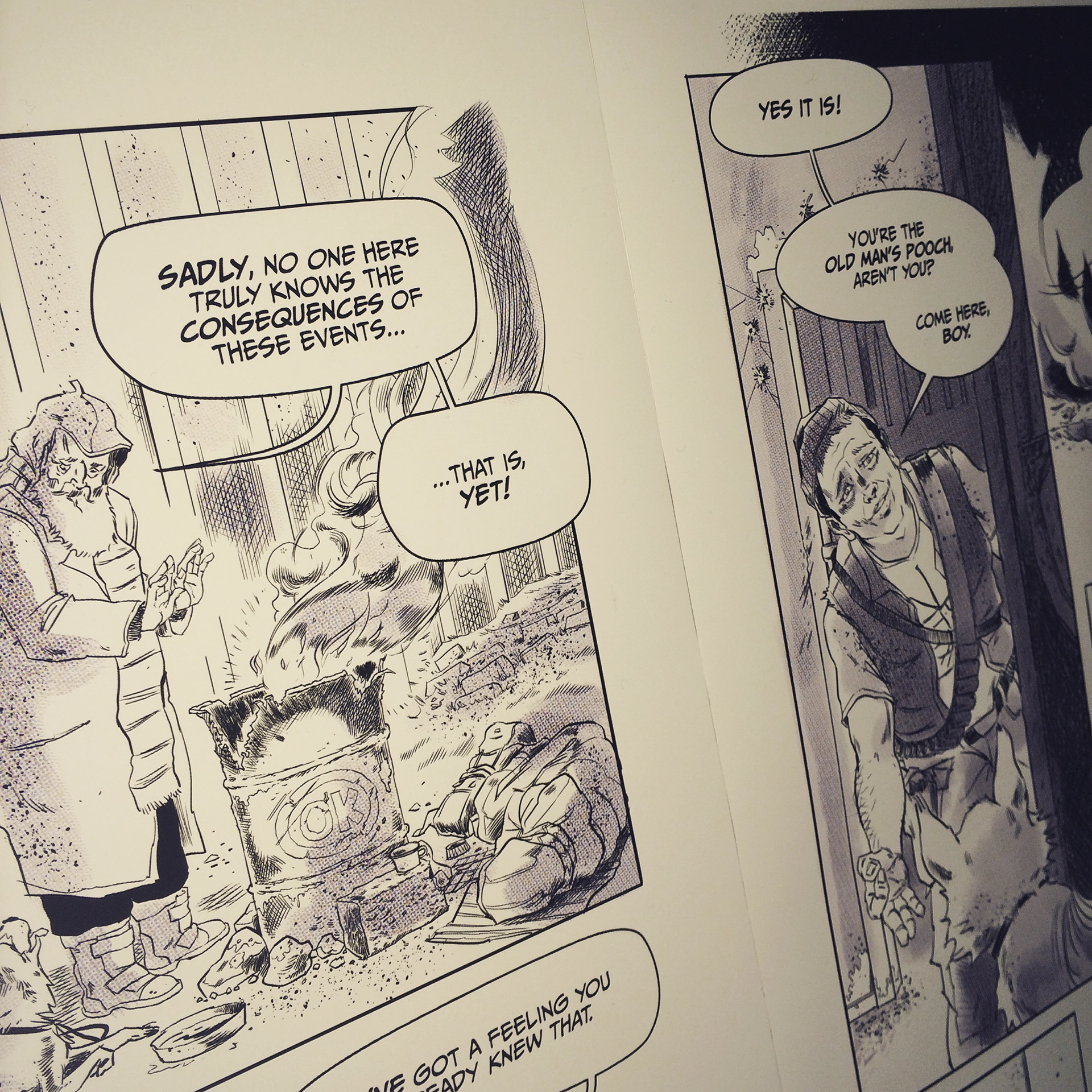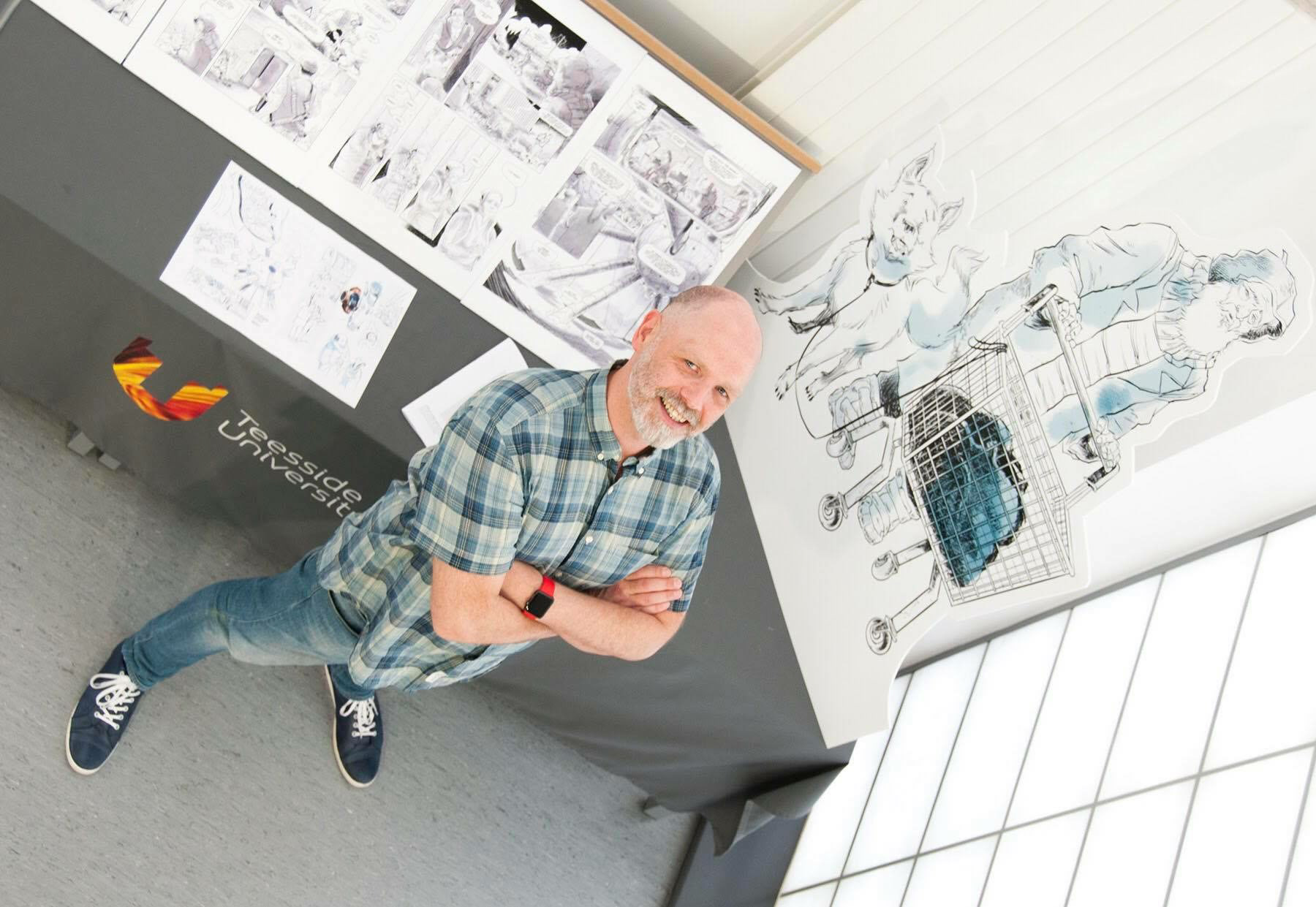During my MA Future Design studies at Teesside University, in 2016, I coined the term; Physequential Storytelling - From Turning a Page to Turning a Corner.
This came about, due to the fact, that I would have to showcase my final project at the graduation show and ‘just’ displaying a comic would be rather limiting in itself. Having witnessed my wife's approach to site-specific dance performances, I wondered how I could showcase my ‘static’ comic in a similar way.
When laying out a comic book one can use the turn of the page to bring e.g. a surprising element to a story. The eyes may wander when presented with a page or a spread, resulting in the visual narrative being 'read' out of sequence. The only narrative barrier a conventional comic creator has is the magic that awaits the reader by the turning of a page. In much the same way, yet with more of a playful approach, one could e.g. use stairways, halls and outside areas to tell a story and make use of the story’s visual elements within the chosen architectural space.
A Physequential Storytelling would therefore incorporate the location on hand by guiding the reader to turn corners instead of turning a page. Many other ways open up of course, such as the use of anamorphic images that stay distorted and unclear until the right point of view is reached, bypassing the need for turning a corner or changing one’s gaze.
To test the Physequential approach to sequential storytelling, I used the first of the pages below, that I had made while developing the drawing style for what would be my final project: Aleks dBoro (link in menu)
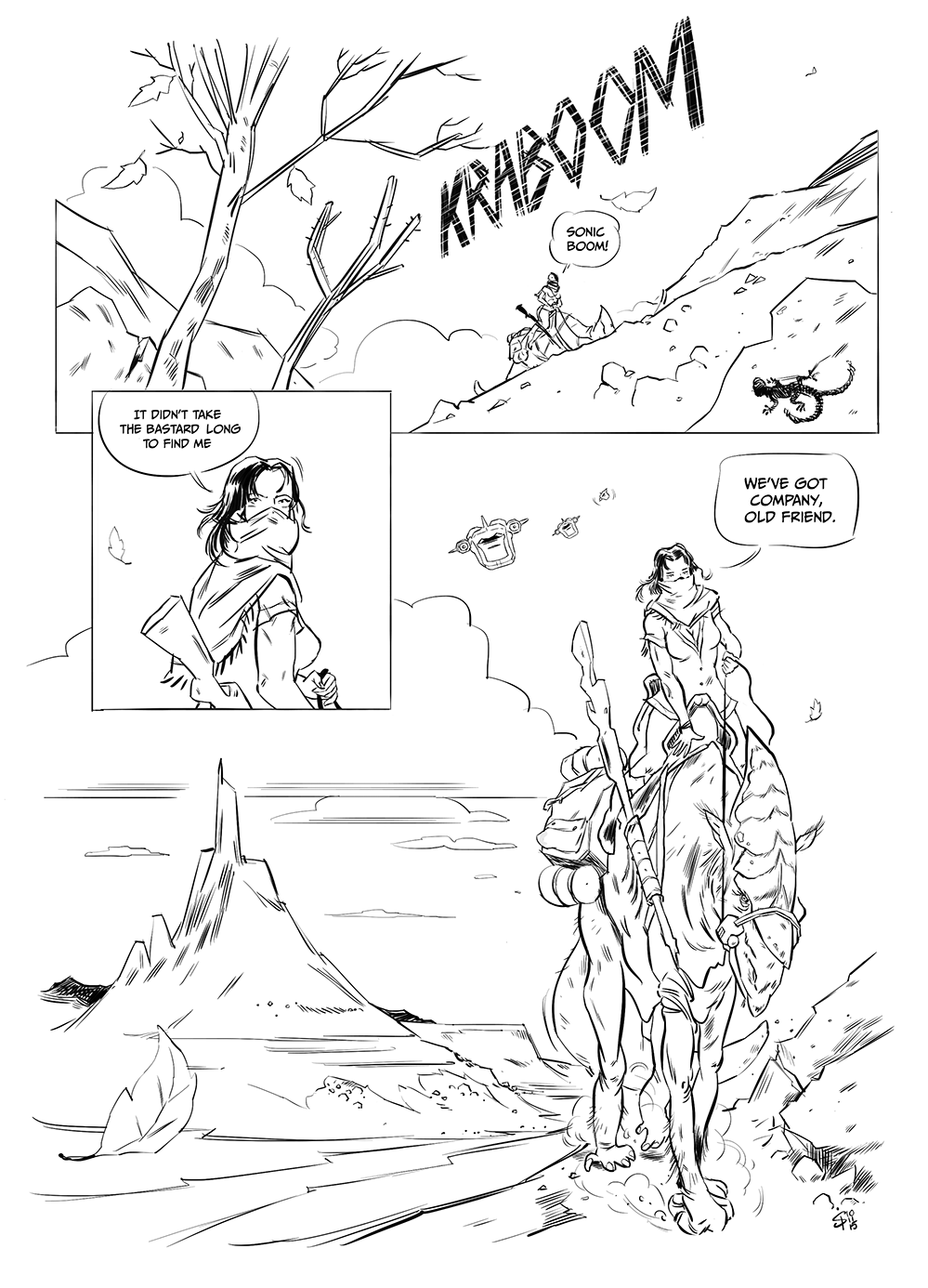


By creating a small scale Physequential narrative out of the first page, in the entrance to the MA Future Design studio space, I set out to explore my proposed manner of storytelling.
Incorporating an anamorphic presentation of the second frame, the reader could stand by the door and take in more of the experience from that location without having to move forward. If the second frame had not been anamorphosed the reader would have had to move along the wall, resulting in a confined viewing experience.
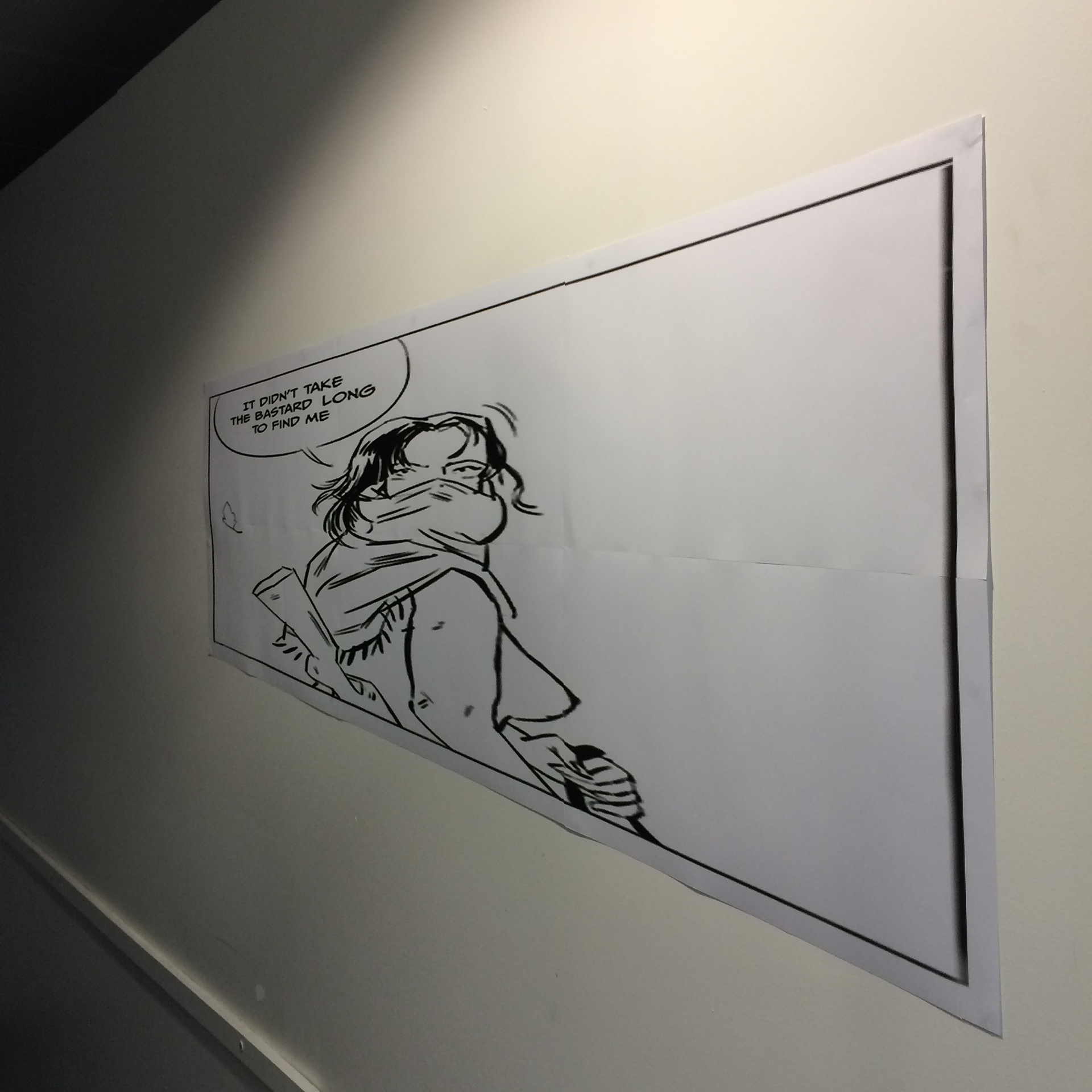

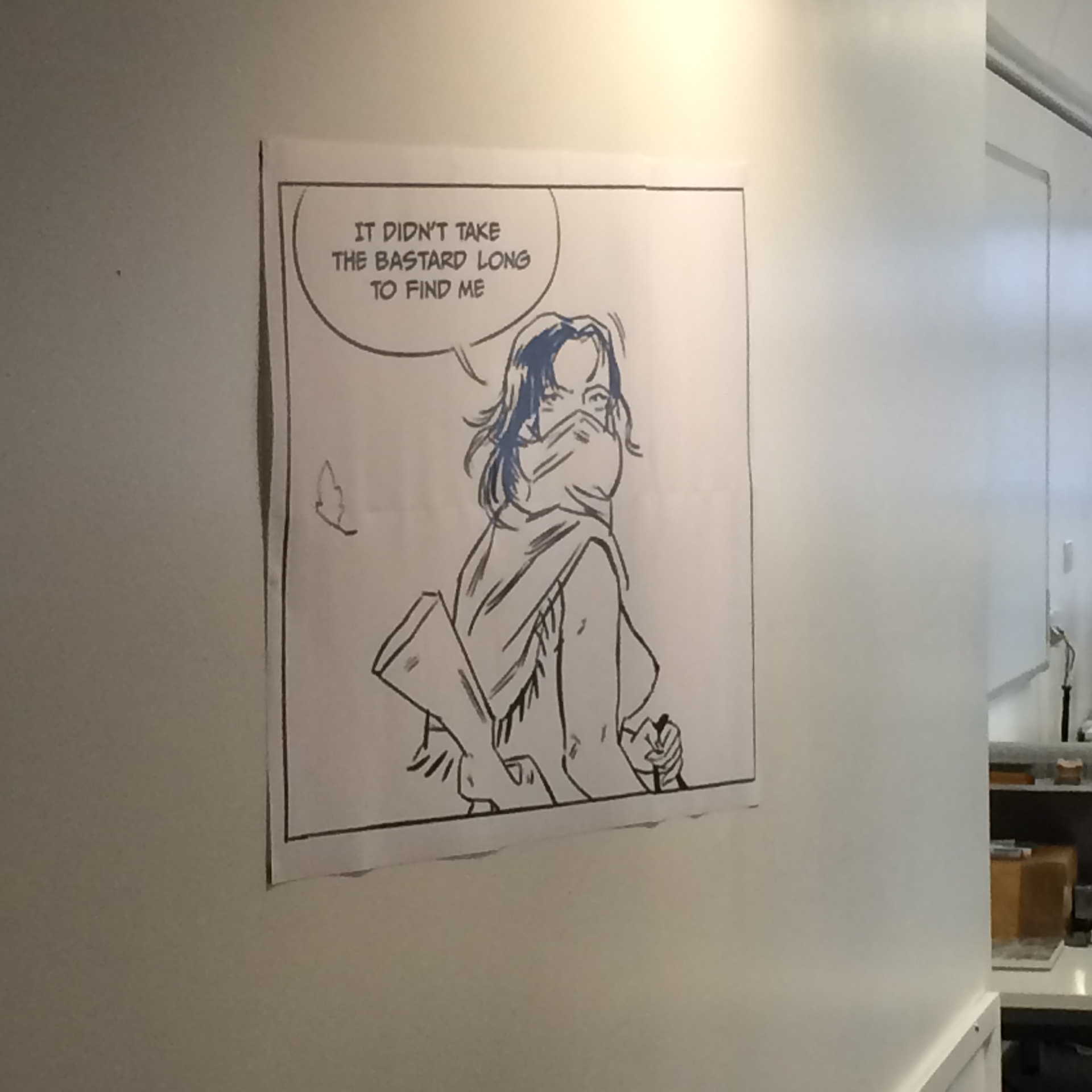

The final project exhibition would eventually focus more on enriching the viewing environment, by bringing attendees into the world of the work on display rather than fully adjusting a narrative to the exhibition space.
I foresee myself visiting my Physeqyential Storytelling approach again in the near future, possibly even using it as a direct means for storytelling, rather than adjusting a story to its ways of narrative.



